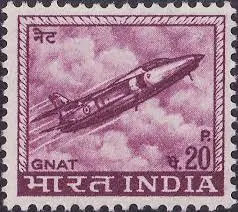The story of the Gnat warplane traces back to its development by the British aircraft manufacturer, Folland Aircraft. Originally designed as a lightweight, single-seat fighter aircraft, the Gnat underwent modifications to suit the requirements of the Indian Air Force. It was later produced under license by Hindustan Aeronautics Limited (HAL) in India.
The Gnat warplane earned its reputation for outstanding performance in aerial combat. During the 1965 Indo-Pak War, Gnats of the Indian Air Force engaged Pakistani aircraft with remarkable success, earning the moniker "Sabre Slayer" for its ability to outmaneuver the more advanced Pakistani Sabre jets. Its agility and speed made it a formidable adversary in air-to-air combat.
In 1958, the Indian Air Force formally inducted the Gnat warplane into its fleet. Over the years, it became a mainstay in the IAF's inventory, serving in various roles including air defense, ground attack, and reconnaissance. Its compact size and impressive performance made it a versatile asset in India's defense arsenal.
The Gnat warplane left an indelible mark on India's aviation heritage. Beyond its combat achievements, it served as a platform for pilot training and skill development. Many pilots of the Indian Air Force honed their aerial combat skills flying the Gnat, contributing to the overall proficiency of the IAF.
Despite being phased out of active service in the Indian Air Force in the 1980s, the legacy of the Gnat warplane lives on. It remains a symbol of India's ingenuity and technological capabilities in the field of aviation. The contributions of the Gnat and the pilots who flew it continue to be remembered and celebrated by aviation enthusiasts and historians alike.
The Gnat warplane holds a special place in India's military history, symbolizing the nation's ability to innovate and adapt in the face of challenges. Its remarkable performance in combat and its enduring legacy make it a testament to India's aviation heritage. The Gnat warplane remains a source of pride for the Indian Air Force and a symbol of India's indomitable spirit in the skies.
